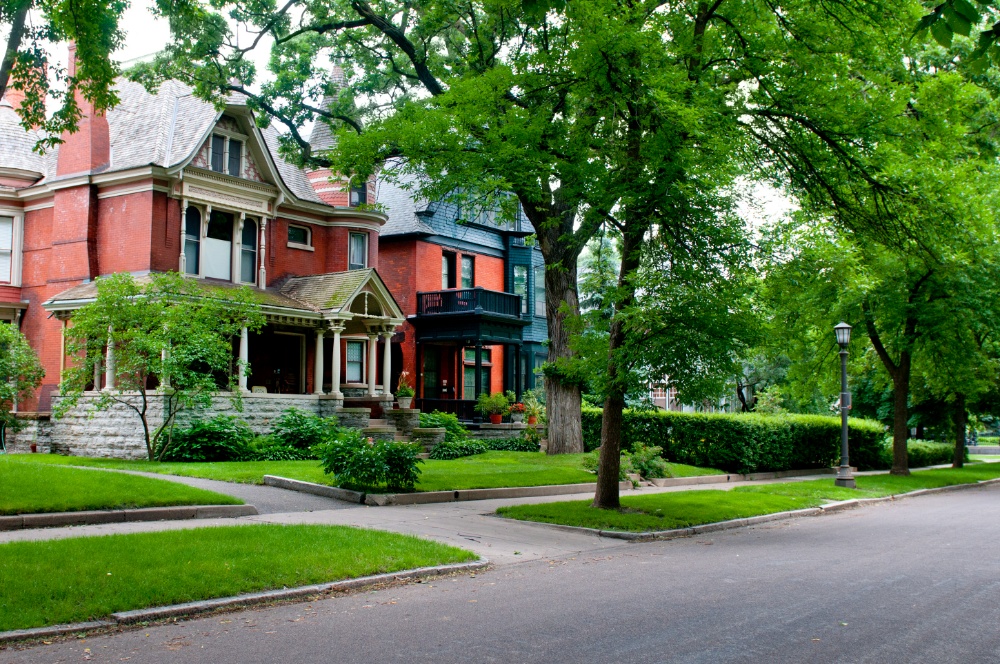
Mesta Park
The Mesta Park is a residential area, built in stages between 1906-1930, with half of the construction completed by 1915. More than 80% of the buildings in the Mesta Park Historic District are detached single-family dwellings that are presently occupied. The overall condition of these houses is good to excellent. The typical house in Mesta Park Historic District is a two-story, wood frame structure, with clapboard siding (some have brick veneers), featuring a hipped roof, a wide entrance porch, sash windows with a variety of glazing patterns, asymmetrical fenestration, and includes dormers, either an interior or endwall brick chimney, and an ornamented panel and glass entrance door. Other decorative details include gable motifs, art glass, and special porch piers or posts. Most of the houses have a detached, one car garage.
Stylistically the picturesque cottage dominates the Mesta Park Historic District, but bungalows, plains cottages, and houses or apartment buildings with historic detailing punctuate the district. Mesta Park Historic District’s proximity to the Central Business District and its adjacency to the prominent Heritage Hills Historic District (National Register, 1979) made Mesta Park an attractive area for development and settlement. Historically most residents have had close ties to the entrepreneurial activity of the business district. Mesta Park also served as interim housing for Oklahoma City’s more ambitious and more successful businessmen and politicians.
Significance
Like the other nationally recognized historic districts in Oklahoma City (Edgemere Park Historic District, Heritage Hills Historic District, Putnam Heights Historic District and Capitol-Lincoln Terrace Historic District), Mesta Park Historic District is a neighborhood of significant architecture. It differs from the other districts in that the neighborhood contains an extremely harmonious blend of different housing types.
Duplexes, four-plexes, eight-plexes and larger apartment buildings were designed to be compatible with and to complement each other as well as the single-family structures. This mixture of housing types allowed for an economic mix of people; leaders of business and government were neighbors with those who contributed to the community from less lofty social and professional positions.
